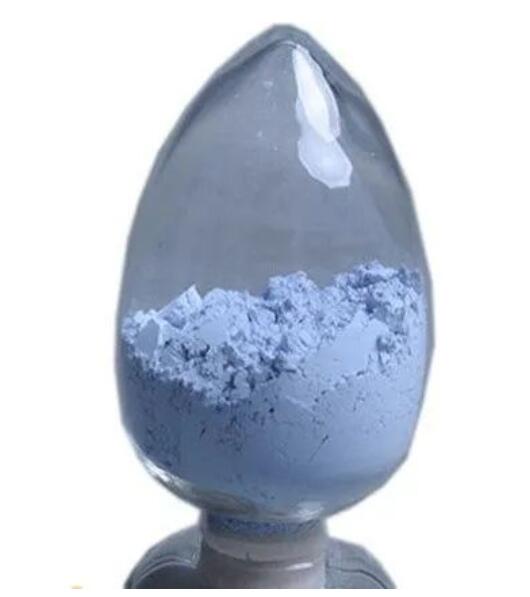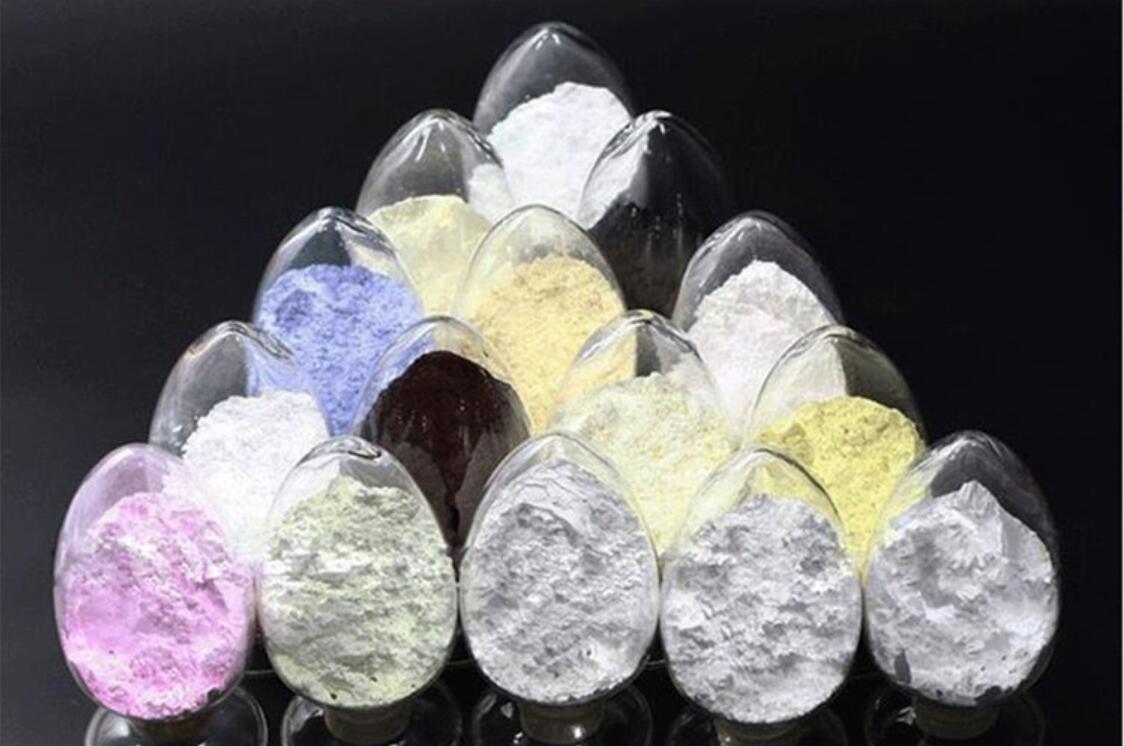Rare earth elements themselves have rich electronic structures and exhibit many optical, electrical, and magnetic properties. After rare earth nanomaterialization, it exhibits many characteristics, such as small size effect, high specific surface effect, quantum effect, extremely strong optical, electrical, magnetic properties, superconductivity, high chemical activity, etc., which can greatly improve the performance and function of materials and develop many new materials. It will play an important role in high-tech fields such as optical materials, light-emitting materials, crystal materials, magnetic materials, battery materials, Electroceramics, engineering ceramics, catalysts, etc.?
1、 Current development research and application fields
1. Rare earth luminescent material: Rare earth nano fluorescent powder (color TV powder, lamp powder), with improved luminous efficiency, will greatly reduce the amount of rare earth used. Mainly using Y2O3, Eu2O3, Tb4O7, CeO2, Gd2O3. Candidate New Materials for High Definition Color Television.?
2. Nano superconducting materials: YBCO superconductors prepared using Y2O3, especially thin film materials, have stable performance, high strength, easy processing, close to practical stage, and broad prospects.?
3. Rare earth nano magnetic materials: used for magnetic memory, magnetic fluid, giant magnetoresistance, etc., greatly improving performance, making devices high-performance and miniaturized. For example, oxide giant magnetoresistance targets (REMnO3, etc.).?
4. Rare earth high-performance ceramics: Electroceramics (electronic sensors, PTC materials, microwave materials, capacitors, thermistors, etc.) prepared with ultra-fine or nanometer Y2O3, La2O3, Nd2O3, Sm2O3, etc., whose electrical properties, thermal properties, and stability have been greatly improved, are an important aspect of upgrading electronic materials. Ceramics sintered at lower temperatures, such as nano Y2O3 and ZrO2, have strong strength and toughness, and are used in wear-resistant devices such as bearings and cutting tools; The performance of multilayer capacitors and microwave devices made of nano Nd2O3, Sm2O3, etc. has been greatly improved.?
5. Rare earth nanocatalysts: In many chemical reactions, rare earth catalysts are used. If rare earth nanocatalysts are used, their catalytic activity and efficiency will be greatly improved. The current CeO2 nano powder has the advantages of high activity, low price and long service life in the automobile exhaust purifier, and has replaced most of the precious metals, with an annual consumption of thousands of tons.?
6. Rare earth ultraviolet absorber: Nano CeO2 powder has strong absorption of ultraviolet rays, and is used in sunscreen cosmetics, sunscreen fibers, Car glass, etc.?
7. Rare earth precision polishing: CeO2 has a good polishing effect on glass and other materials. Nano CeO2 has high polishing precision and has been used in liquid crystal displays, silicon wafers, glass storage, etc. In short, the application of rare earth nanomaterials has just begun and is concentrated in the field of high-tech new materials, with high added value, wide application range, huge potential, and very promising commercial prospects.?
2、 Preparation technology
At present, both production and application of nanomaterials have attracted attention from various countries. China's nanotechnology continues to make progress, and industrial production or trial production has been successfully carried out in nanoscale SiO2, TiO2, Al2O3, ZnO2, Fe2O3 and other powder materials. However, the current production process and high production costs are its fatal weakness, which will affect the widespread application of nanomaterials. Therefore, continuous improvement is necessary.?
Due to the special electronic structure and large Atomic radius of rare earth elements, their chemical properties are very different from other elements. Therefore, the preparation method and post-treatment technology of rare earth nano oxides are also different from other elements. The main research methods include:?
1. Precipitation method: including oxalic acid precipitation, carbonate precipitation, hydroxide precipitation, homogeneous precipitation, complexation precipitation, etc. The biggest feature of this method is that the solution nucleates quickly, is easy to control, the equipment is simple, and can produce high-purity products. But it is difficult to filter and easy to aggregate?
2. Hydrothermal method: Accelerate and strengthen the hydrolysis reaction of ions under high temperature and pressure conditions, and form dispersed nanocrystalline nuclei. This method can obtain nanometer powders with uniform dispersion and narrow particle size distribution, but it requires high temperature and high pressure equipment, which is expensive and unsafe to operate.?
3. gel method: It is an important method for preparing inorganic materials, and plays a significant role in inorganic synthesis. At low temperature, organometallic compounds or organic complexes can form sol through polymerization or hydrolysis, and form gel under certain conditions. Further heat treatment can produce ultrafine Rice noodles with larger specific surface and better dispersion. This method can be carried out under mild conditions, resulting in a powder with a larger surface area and better dispersibility. However, the reaction time is long and takes several days to complete, making it difficult to meet the requirements of industrialization?
4. Solid phase method: high-temperature decomposition is carried out through solid compound or intermediate Dry media reaction. For example, rare earth nitrate and oxalic acid are mixed by solid phase ball milling to form an intermediate of rare earth Oxalate, which is then decomposed at high temperature to obtain ultra-fine powder. This method has high reaction efficiency, simple equipment, and easy operation, but the resulting powder has irregular morphology and poor uniformity.?
These methods are not unique and may not be fully applicable to industrialization. There are many preparation methods, such as organic microemulsion method, alcoholysis, etc.?
3、 Progress in industrial development
Industrial production often does not adopt a single method, but rather draws on strengths and complements weaknesses, and combines several methods to achieve the high product quality, low cost, and safe and efficient process required for commercialization. Guangdong Huizhou Ruier Chemical Technology Co., Ltd. has recently made industrial progress in developing rare earth nanomaterials. After many methods of exploration and countless tests, a method that is more suitable for industrial production - microwave gel method was found. The biggest advantage of this technology is that: the original 10 day gel reaction is shortened to 1 day, so that the production efficiency is increased by 10 times, the cost is greatly reduced, and the product quality is good, the surface area is large, the user trial reaction is good, the price is 30% lower than that of American and Japanese products, which is very competitive internationally, Achieve international advanced level.?
Recently, industrial experiments have been conducted using the precipitation method, mainly using ammonia water and ammonia carbonate for precipitation, and using organic solvents for dehydration and surface treatment. This method has a simple process and low cost, but the product quality is poor, and there are still some agglomerations that need further improvement and improvement.?
China is a major country in rare earth resources. The development and application of rare earth nanomaterials have opened up new avenues for effective utilization of rare earth resources, expanded the scope of rare earth applications, promoted the development of new functional materials, increased the export of high value-added products, and improved foreign exchange earning capabilities. This has important practical significance in turning resource advantages into economic advantages.
Post time: Jun-27-2023

